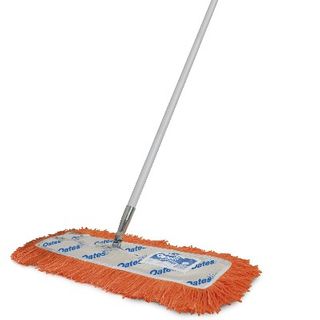Dust Control Mops

Effective Dust control creates a safer operating environment by reducing airborn harmful particles from being inhaled. Brooms commonly stir up dust as debris and dust is cleared. Using an anti-static mop reduces dust being stirred up as particles adhere more readily to the charged strands. As the mop travels over the floor, it builds electrostatic charge. Keep the same side of the mop facing forward to gather dust more consistently.
Choose dust control mops that are either small for accessing narrower areas, or wide units that are more productive. Available in 30cm, 60cm and 90cm variations, and also 100cm scissor mops with two handles and mop heads for very wide cleaning. A dust pan may be needed to gather debris.
When cleaning you can use a vacuum on the mop, or take the mop to an environment when it can be shaken or the fringe beaten to release trapped debris and dust. In this case consider wearing a mask as this is done.
High dust areas like workshops and warehouses should be cleaned with a motorised sweeper that sucks dust into a filter within a closed hopper. The Nilfisk SW750 sweeper is popular, available for both sale and equipment hire at Rapid Clean Newcastle.
Where dust is known to have higher risk such as high silica (silicosis dust risk), lead or cargenogenic paints, asbestos, then a hazardous dust vacuum with accredited safety filtration for hazardous dust, should be used. Contact Rapid Clean Newcastle for advice.

















